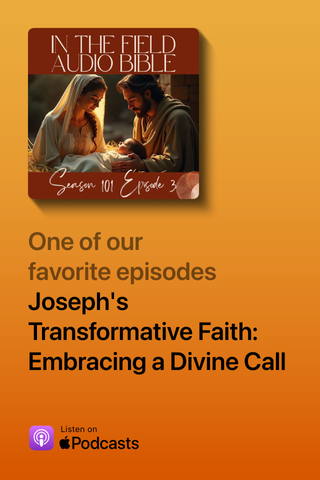Holy Weakness: When Divine Meets Human

The concept of a high priest might seem distant to our modern sensibilities. Yet, Hebrews 5 brings this ancient role into sharp, relevant focus by revealing Jesus as our ultimate High Priest—one who bridges the divine and human realms, showing us when divine meets human in ways that transform our understanding of God's accessibility.
The beauty of Hebrews 5 lies in its portrayal of Jesus' dual nature. Unlike the priests of old who offered sacrifices for their own sins as well as for the people's, Jesus stands as the perfect mediator. The chapter reveals that while Jesus is divine, he fully embraced human experience—not as a distant observer, but as an active participant. This paradox is powerfully captured in verses 7-8, where we learn that "In the days of his flesh, Jesus offered up prayers and supplications, with loud cries and tears, to the one who was able to save him from death." This image of Jesus—vulnerable, emotional, and deeply human—offers profound comfort to anyone struggling with pain or feeling distant from God.
Perhaps the most revolutionary concept in this chapter is that Jesus, though being the Son of God, "learned obedience through what he suffered." This is not suggesting Jesus was ever disobedient, but rather that he chose to experience the full weight of human suffering, thereby qualifying him as our compassionate High Priest. His perfection came not from avoiding pain but by entering fully into it. This transforms how we view our own suffering—not as punishment or abandonment, but potentially as sacred ground where God meets us in our weakness.
The chapter concludes with a gentle rebuke about spiritual maturity, comparing basic understanding to milk and deeper truths to solid food. This metaphor challenges us to move beyond elementary teachings toward a more profound relationship with Christ. The author acknowledges that some truths are "hard to explain," recognizing that spiritual growth requires effort, commitment, and practice. This progression from milk to solid food reminds us that faith is not static but dynamic—a lifelong journey of growing closer to understanding the mysteries of Christ's priesthood and sacrifice.
The practical implications of Jesus as our High Priest are life-changing. It means we never pray to a God who doesn't understand our struggles. It means our weaknesses aren't barriers to approaching God but are precisely the places where his mercy meets us. It means that when we feel most broken, ashamed, or distant, we can "draw near with confidence to the throne of grace," knowing our High Priest intimately understands human experience. This reality transforms prayer from a religious exercise into an intimate conversation with someone who has walked our path.
Hebrews 5 invites us to ask: What would change in your life if you truly believed Jesus was that near? How might you pray differently? How might you view your struggles, your weaknesses, and your journey of obedience? The chapter suggests that embracing the truth of Jesus as our compassionate High Priest doesn't just change our theology—it changes how we live, how we pray, how we suffer, and how we extend grace to others and ourselves.















